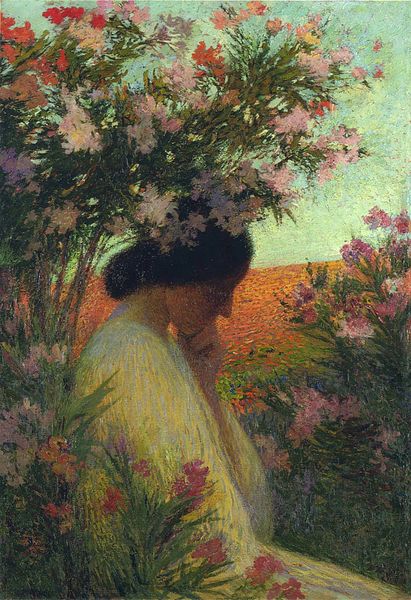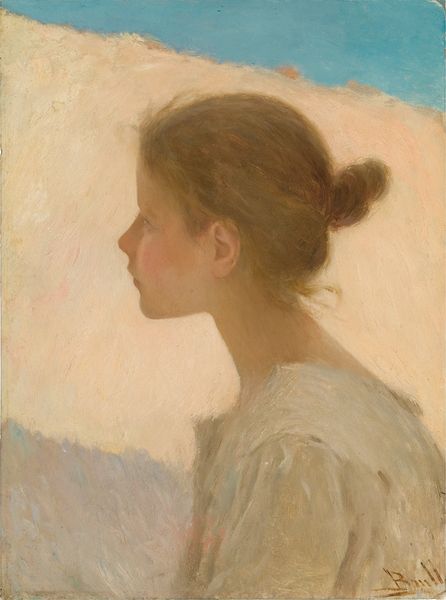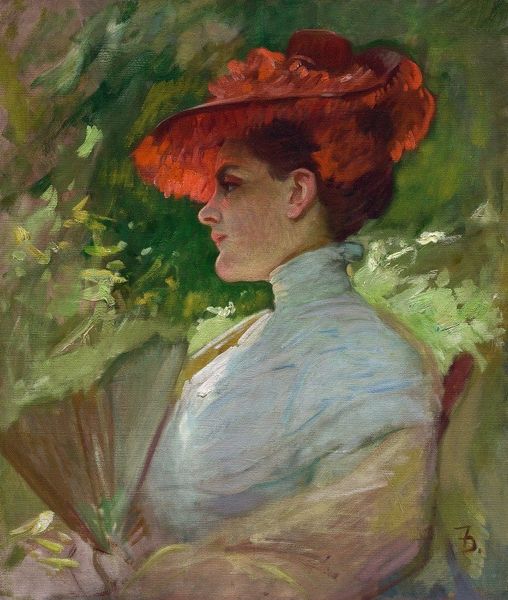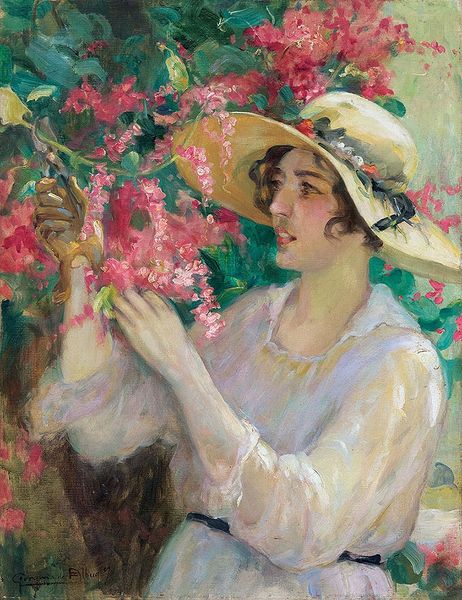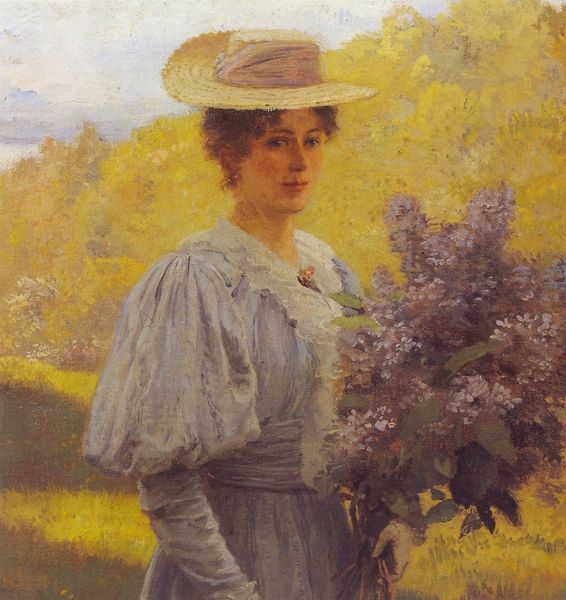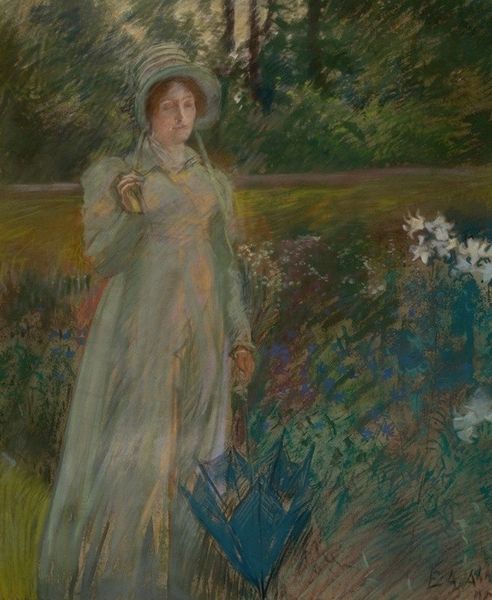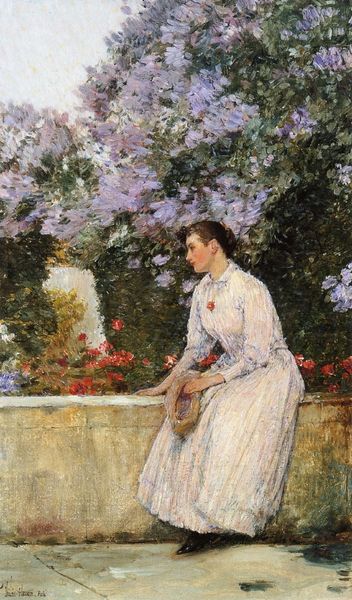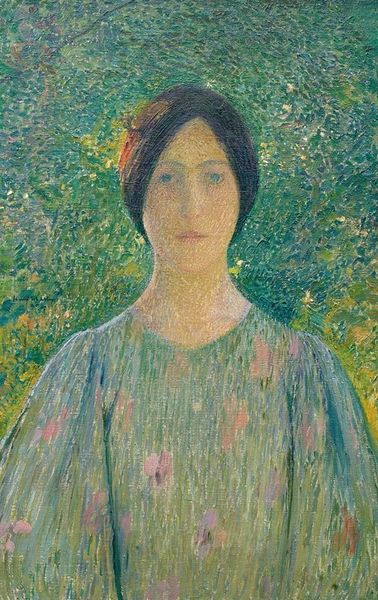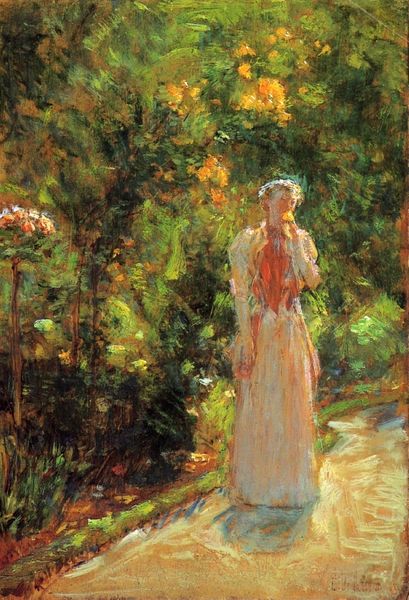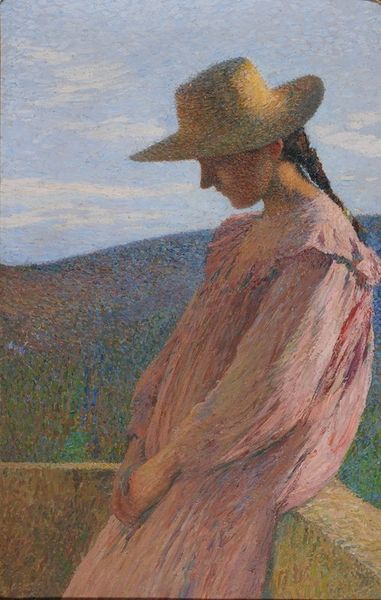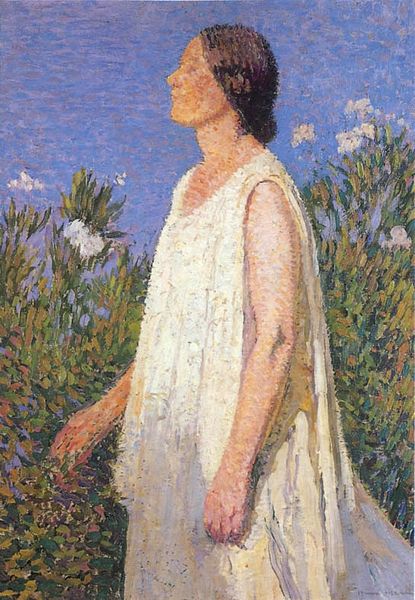
painting, oil-paint
#
portrait
#
painting
#
impressionism
#
oil-paint
#
landscape
#
figuration
#
oil painting
Copyright: Public domain
Curator: Welcome, everyone. Today, we're looking at "In Flowers" by Henri Martin. Editor: The initial feeling is one of tranquil intimacy. The way the woman is enveloped in blooms creates a very insular and reflective atmosphere. It’s like a secret garden captured on canvas. Curator: Precisely. Note how Martin’s Impressionistic technique fragments light and color. Observe the stippling—the dense accumulation of small, distinct points of color— particularly around the figure's face and dress. There’s a strategic distribution of tonal values, with a pronounced focus on textural articulation rather than sharp, defined contours. Editor: Yes, this adds to the dreamlike quality. Flowers have so many traditional associations. Considering that the young woman is set among these pink and white blossoms, it feels pertinent to connect her with ideals of innocence, beauty, and the ephemeral nature of life itself. Curator: I concur that the visual field constructed with these patterns of flowers might very well emphasize symbolic meanings connected with femininity. But equally relevant here is how these painterly devices contribute toward pictorial flatness. Despite suggestions of spatial recession, the composition asserts itself foremost as an arrangement of interacting colored shapes on a two-dimensional surface. Editor: The landscape backdrop with its ochre and blue accents does draw the eye outward, though, complicating the flat picture plane. Perhaps that horizon suggests both possibility and constraint for the woman, caught between inner reflection and the wider world? Curator: Perhaps, yet I'd encourage you also to consider how these planes function on a structural level—horizontal versus vertical—within a tightly organized composition governed more by optic sensations and formal relationships than overt narrative implication. Editor: A fascinating point. Even when reading pure formalism into an image, cultural meanings invariably seep through. Doesn't that interplay enrich our experience of art? Curator: I suppose it reveals, above all, how our interpretations depend less on definitive answers and more on continually questioning modes of seeing. Editor: Beautifully put. For me, "In Flowers" speaks to the eternal dance between our inner selves and the symbols we weave into our realities.
Comments
No comments
Be the first to comment and join the conversation on the ultimate creative platform.
